Field Guide 2020: Growing the future designer
This Field Guide article is the second in this series of commissioned essays, interviews, podcasts and artworks to be published over 16 weeks on designassembly.org.nz and culminate in a downloadable PDF publication which will be distributed nationally.
We are incredibly grateful to Creative New Zealand who funded this 2020 Field Guide, which actively investigates, celebrates, nurtures and challenges current design thinking, methodology and practitioners in the Aotearoa design community. The project is “a multidisciplinary exploration of New Zealand’s post-COVID design practice”. It is produced by five authors, five illustrators, with art direction, design, editorial, publishing and production support from the Design Assembly team & RUN Agency.

Supported by Creative New Zealand
The artwork to accompany this essay is by Lucie Blaževská a graphic designer and art tutor, originally from Czech Republic. She moved to New Zealand in 2014 and has embraced the culture and art scene over the past few years, further developing her art style from a wide pool of influences and techniques. Lucie is a passionate advocate for social change through artistic practice and creative workshops.
‘Designers by nature are futurists’ is a series of 4 essays which investigate future possibilities, trends and expectations about how our design community in Aotearoa might forge ahead in uncertain times. Topics of interest include how developing technologies are expected to impact practice, how educational institutions are preparing emerging talent, the future of indigenous design, changing demographics in the industry and the way we work.
Growing the future designer
Designers are poised to move into the future; agile thinkers, open to embracing uncertainty and change, a designer has the potential to shape our world in significant ways. But how do we grow a decent designer? What do you teach them? These are a few questions I’ve been asking lately.
“Why don’t you just spend that money on a mac, some fancy software, and teach yourself?”
This was suggested to me when I first expressed a desire to study graphic design.
It’s a good question, and if you subscribe to Elon Musk’s way of thinking, you might just do that. Or at least consider writing some code that would help.
For me, the idea of learning on a lonely mac from a 15-year-old Youtuber felt desperate. I started shopping around New Zealand’s plethora of design campuses. Yip – there’s a few. My requisites were high. As an ex-high school teacher, I had never touched photoshop and didn’t know what a meme was. If I was to survive in this ultra-chic industry, I needed help, fast.
My first week of studio, a kind 18-year-old took me under her wing, “Don’t worry. I’ll teach you Snapchat.” I knew I was in the right place.
I am a graduate of AUT’s Bachelor of Graphic Design programme, but there are plenty of other schools to choose from. Whatever the school’s approach, we can all agree – the world needs different types of designers, but what skills and competencies might the future designer need? And how do we grow good ones?
Futurism is not an exact science; in fact, it’s rather uncertain, so the best we can do is prepare for this unpredictability.
One teacher reminded me that ‘a ‘good’ design education will depend on who you ask.’ So to get a cross-section of ideas, I spoke with a range of educators on the topic: Dr Gabriela Baron and Dr Deb Polson (University of Auckland), Jo Bailey (Massey University), Sam Cunnane (Waikato Institute of Technology), Zach Dodson (Victoria University), Dr Welby Ings (Auckland University of Technology), Kerry Ann Lee (Massey University), Caro McCaw (Otago Polytechnic), Jim Murray (Media Design School), and Claire Robinson (Massey University).
What should a design education for the future teach?
Here’s what our academics thought:
1. Creative courage
Welby: “We have to develop highly articulate people who can see into the nature of the unique. The people with whom I work today are often quite anxious, anxious about being seen to do the right thing. We need to get people beyond the stage of strategic imitation and build creative courage, so they are not resorting to doing what already exists in a different version.”
2. Discernment for technology
Kerry Ann: “With online life ever more present and enmeshed in our everyday lives, I think that aspects of the digital media-scape such as the filter bubble, safety and privacy, and the formation and performance of online identities will continue to be factors to be aware of from a pedagogical perspective. There’s also been a genuine desire to embrace old-tech and slow media: print-making, publication, craft, and these will accrue a difference sense of value, invigorated by emerging designers in years to come. I hope!”
Welby:“We must shift with technologies but also sniff out what overpromises. Youtube and Facebook offer the greatest library in the world’s greatest rubbish heap … Our knowledge environment has increasing learnt to dress up poor knowledge so that it looks good. If people cannot discern, they become vulnerable. We used to have editors and publishers, and these were discerning gatekeepers on knowledge – but they have gone. On the internet, a thing is valued by how much people like it. This has huge impact on how we teach design. Design education cannot simply be technological literacy and teaching people to style things; we have to grow people who can discern rubbish from quality, and then call the rubbish out.”

Jim: “Technology will enable us to have a deeper understanding of our users and continue to empower design thinking. I also feel that speculative design has an important role to play by allowing students to consider current ideas in future scenarios.”
3. Critical thinking
Sam: “We are teaching people to think. To be curious. This idea of curiosity, the ability to ask questions, follow a track and unpack that. It is an underpinning value rather than a skill. To look and learn as they go along.”
Jo: “A good design education should provoke a critical thoughtfulness and make you able to frame what you’re doing in a wider context in terms of the impact on others (human and non-human)… There’s a Milton Glaser essay called ’12 steps on the graphic designer’s road to hell’ that posits a series of ‘how far would you go?’ scenarios. It’s a useful introduction to asking, where are your boundaries? I’ve always encouraged people to think about their own values and have a sort of personal code of ethics. Working out who you’d say no to is important.”

Zach:“You can teach critical thinking but it is hard to say, ‘we’re going to teach it this semester and at the end, everybody will be a critical thinker.’ It’s more like, there is a light that goes on at a certain moment where you think to yourself, ‘hold on a minute, what is behind all of this and what is going on here?”
4. The ability to read design in the world
Jim: “A good understanding of history shapes our connection with the future… however, I do feel that students need to be given the freedom to explore the relevance of history in relation to a modern context. History allows us to reflect and see patterns that emerge over time, it provides a foundation of knowledge and reference point to draw from.”
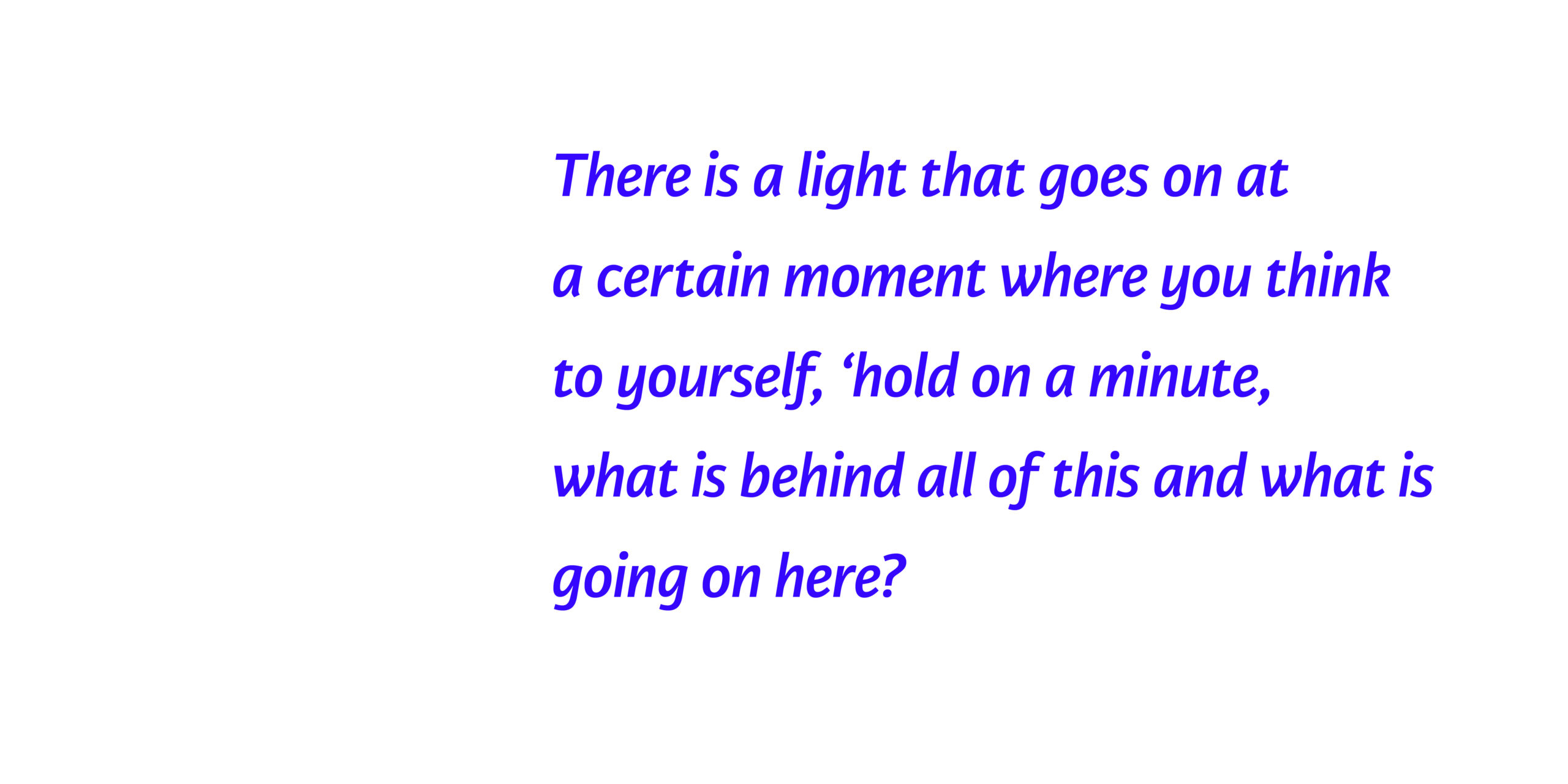
Welby: “Design history is important, not because history repeats itself but because it rhymes. Being able to read the world makes us useful. We also understand there is a residue from the decisions we make. Design doesn’t live in textbooks, it lives in the world that wraps itself around us. If we learn to read that world then we have a greater understanding of how we can progress that world.”
5. Culture and understanding
Claire: “…we need to urgently address our role in reproducing the supremacy of the western knowledge systems that have brought us to this crisis point— in our classrooms and courses, in our curriculum content and research methods, in our markers of higher educational achievement, success and excellence and in our behavioural expectations of staff and students. In this context, …a good design education for future designers is one that:
- decentres white western world views as the default for human experience and knowledge.
- broadens learners’ intellectual vision to include and critically engage with a wider range of indigenous world views and knowledge systems.
- uses learning activities and assessment methods that draw on and deliver to students’ different cultural strengths and identities, needs and contexts.
- provide all cultures and communities the opportunities to design their own solutions to their problems or needs, on their own terms.
- learns with and from students who have lived experience of growing up in a system of un-equal power in order to make lasting change with and for these groups.”
Caro: “Design students must reflect on their culture and their values and be prepared to learn about – and work with – the culture, values and rights of others, and how design is informed by and informs these. Designers in Aotearoa New Zealand have an important role to play in helping us understand, share and communicate bi-cultural ideas and ways of being, and our industries must adapt too.”
Kerry Ann: “Empathy, connection and resonance. The decisions that we make about what we choose to put our energy towards and who we design for is crucial, and has impact and implications…An honesty in identifying gaps in one’s knowledge – what you don’t know or have yet to discover — can be useful action points or further opportunities with which to research, develop and respond to. Also, an application of empathy and sensitivity to outlying factors: What oppositional forces might be at work and who might be excluded from your design and why?”
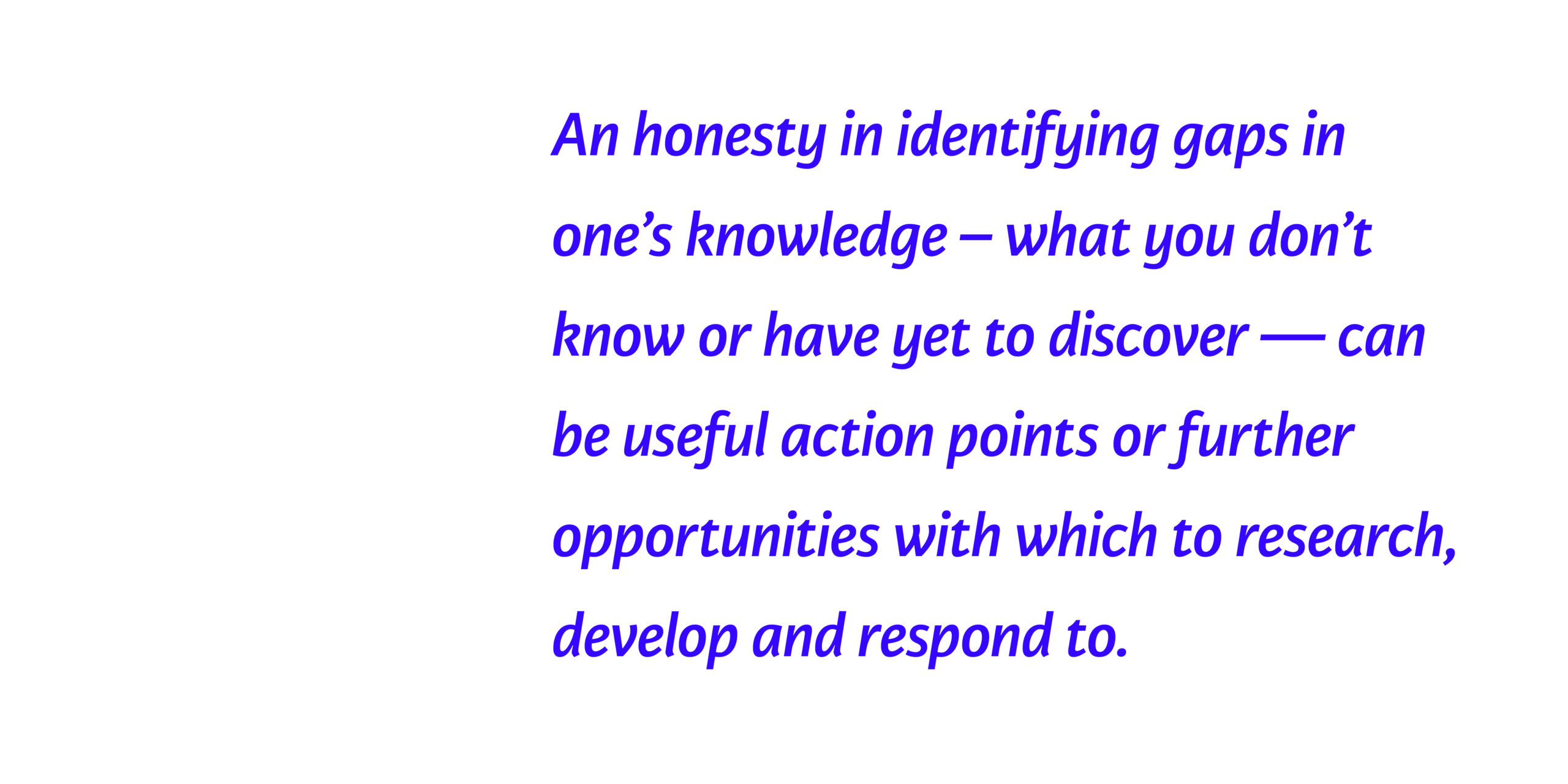
6. How to work as a community
Caro: “… For me engaging students in project-based learning with communities is a way to keep learning real. Students learn to apply their skills, to work in teams, to get organised! And also to reflect on their role and future role in the wider community, it’s about forging relationships… Designers need to be great at working with all sorts of people. We need to be able to use strategies and frameworks to help identify design problems, and become really good at listening and thinking strategically about potential solutions. Designers manage relationships.”
Welby: “… we need to work consciously as a society to avoid loneliness. Designers need to be able to work in communities to counterpoint this. We are in a position to help here because traditionally, in design we have developed research in clusters because this is how we get the highest level of productivity, quality and accountability.”

7. Thinking beyond ‘discipline’
Welby:“Design wraps itself around the world in which we live …I think effective Design education in universities is post-disciplinary. This means it draws knowledge from beyond disciplines and instead it is driven by the nature of questioning itself. The university structure as it stands, is unwieldy and divisive. We also have to remember that people are not an accrual of statistical data, humans are variable so we have to understand them as irregular and uneven so, qualitatively not quantitively.”

Zach: “…you need to look outside, looking at history, different cultures, and expose yourself to us much as you possibly can… The echo chamber and algorithms that are feeding us culture are important to listen closely to; you have to know those well… Those algorithms are feeding everybody. It is that shared culture. But you also need a distinct perspective. It is hard to get that in the echo chamber.”
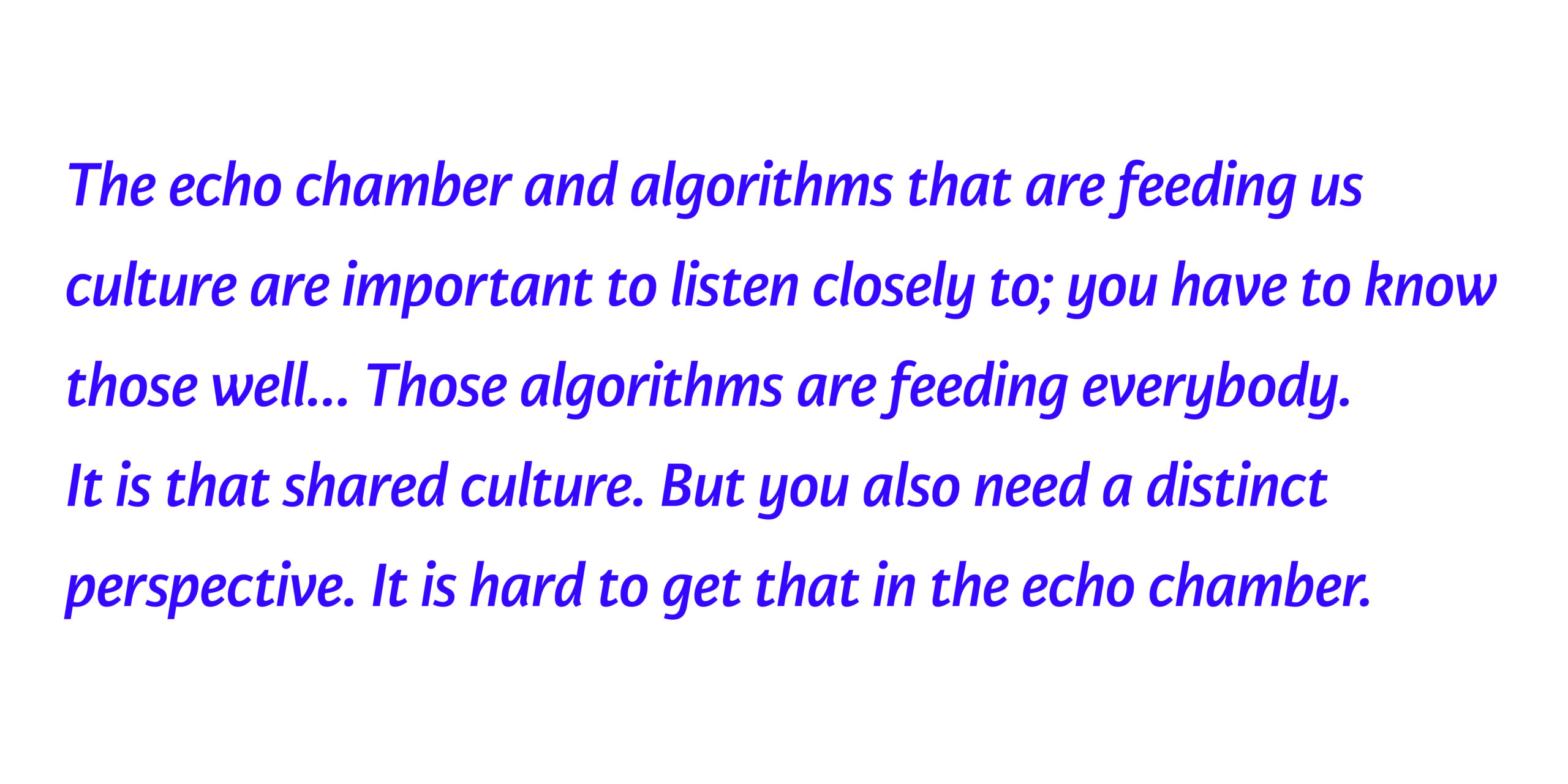
Jo: “That we are in the Anthropocene* now is undeniable, and design education needs to equip future designers to respond to the huge challenges that poses, but also recognise that our sector doesn’t get a free pass. Design’s genesis as a profession is entangled with capitalism — meaning we’ve become part of the problem — and a good design education now can’t gloss over that… A future-looking design education will reckon with its roots, and use speculative, critical or discursive design strategies to think about doing things better.”
How important is flexibility in a design programme?
Gabriela and Deb: “… the world needs people who can apply themselves to many industries and problems, and Designers have the expertise to effectively lead these interdisciplinary teams… Conjoint degrees encourage knowledge in a second subject area, as well as experience working beside others with different skill sets, expertise and approaches.”
Zach: “If students understand how to make (future) predictions themselves… they can also learn to make their own educated guesses about what to know. It’s important to know how to learn and that’s how we can help – how to pick up a new skill. This is valuable because in ten to twenty years you will need to change too. So adaptability is important.”
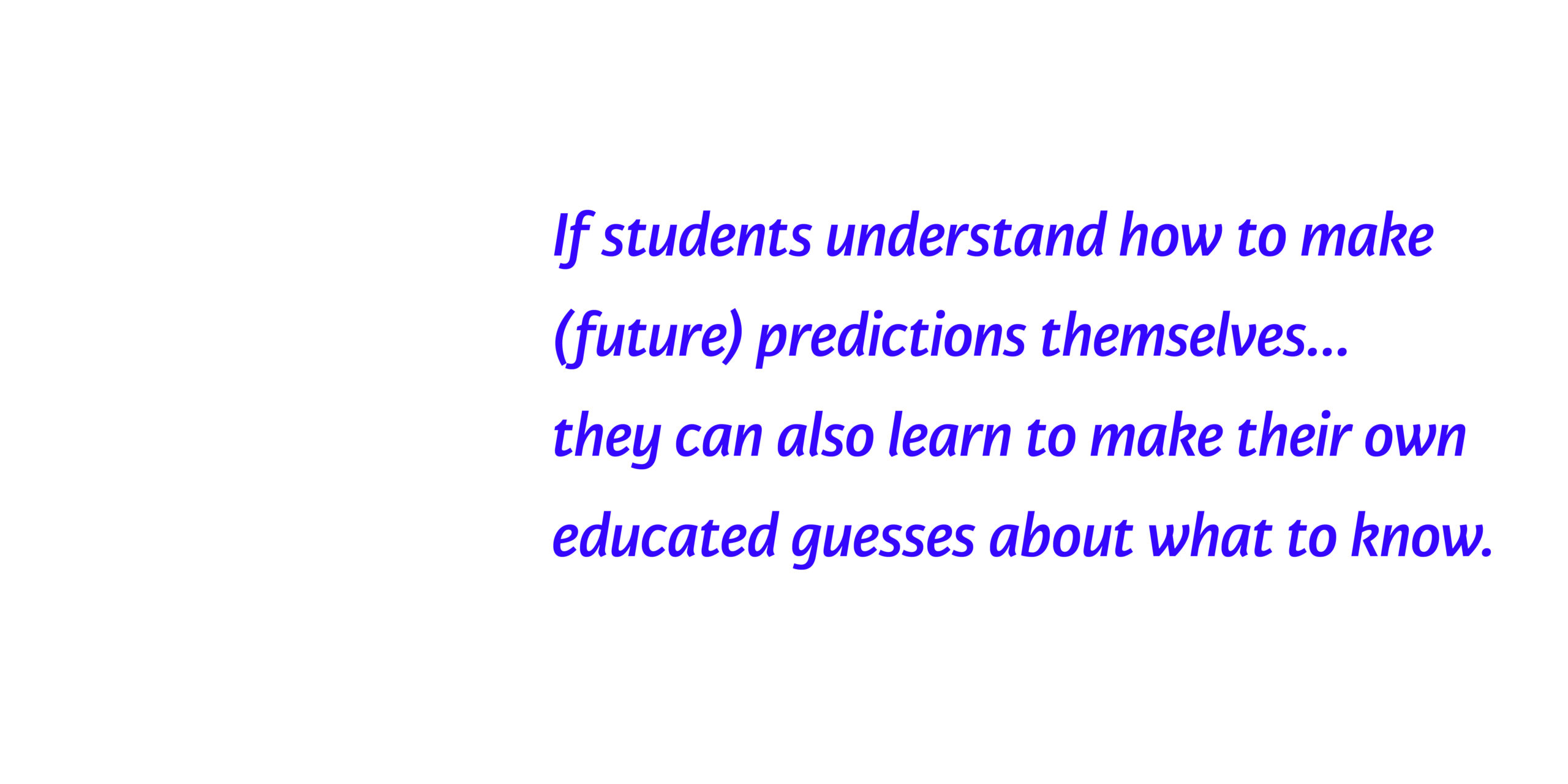
Sam:“Wintec has a Design Factory, (an innovation hub) part of a worldwide network of approximately 30 Factories. Students from different degree programmes and domains can select this as an elective. This works particularly well at final year degree and postgraduate level where people have some experience and can bring a body of knowledge to a project… Maybe we have realized, that for the problems we are trying to solve, a single domain is not able to answer it. Maybe we are realizing that diversity is good for us in terms of advancement.”
What might be some challenges for our future grads?
Gabriela and Deb: “An estimated 65% of today’s school kids will end up working in jobs that don’t exist today (Mariette DiChristina, World Economic Forum, 2019 ). But rather than being daunted by that statistic, we’re giving students the skills they need to prepare for it. Many of the new roles are in design – a field that has seen significant innovation and change in recent times – positions such as Experience Designer, Design Strategist and Innovation Manager didn’t exist a few years ago, but are now in demand and pay well. So we are focusing on providing skills and competences that are constant throughout every design discipline, independently of the field that the student chooses to work on.”

Claire: “Adapting and changing practices, outputs and outcomes to be more sustainable in a circular economy.”
Zach: “What I think students are facing today, is global economic insecurity. Mounting student debt. The whole education market has been influenced by the US and UK’s dive into the commercialisation of education. It has had a gravity effect on everybody managing a university …(In my experience) roles were clearer in terms of career and (education) was more specialised in this way. When I graduated, I knew that if I used QuarkXpress and Photoshop I could get a job with those software skills, but today these skills are not enough. One of them is irrelevant.”

It would seem that design education is becoming more diverse and complex because our world is.
A well-designed programme can provide a great launchpad for a future career but the value of a great teacher is also a key part of the equation.
Zooming under lockdown has taught us two things: a. our country needs better bandwidth, and b. a screen cannot compare with a responsive human being.
Perhaps, due to their modesty, my interviewees did not go into depth about the significance of teachers, but growing good designers means growing our next wave of educators too (not just in the academic environment either) and supporting diversity in that model, “… a good design education will continue to encourage human-centricity (or a broader, interconnected ecosystem). We need a more diverse bunch of people doing the ‘shaping of the shapers’ says Jo Bailey.
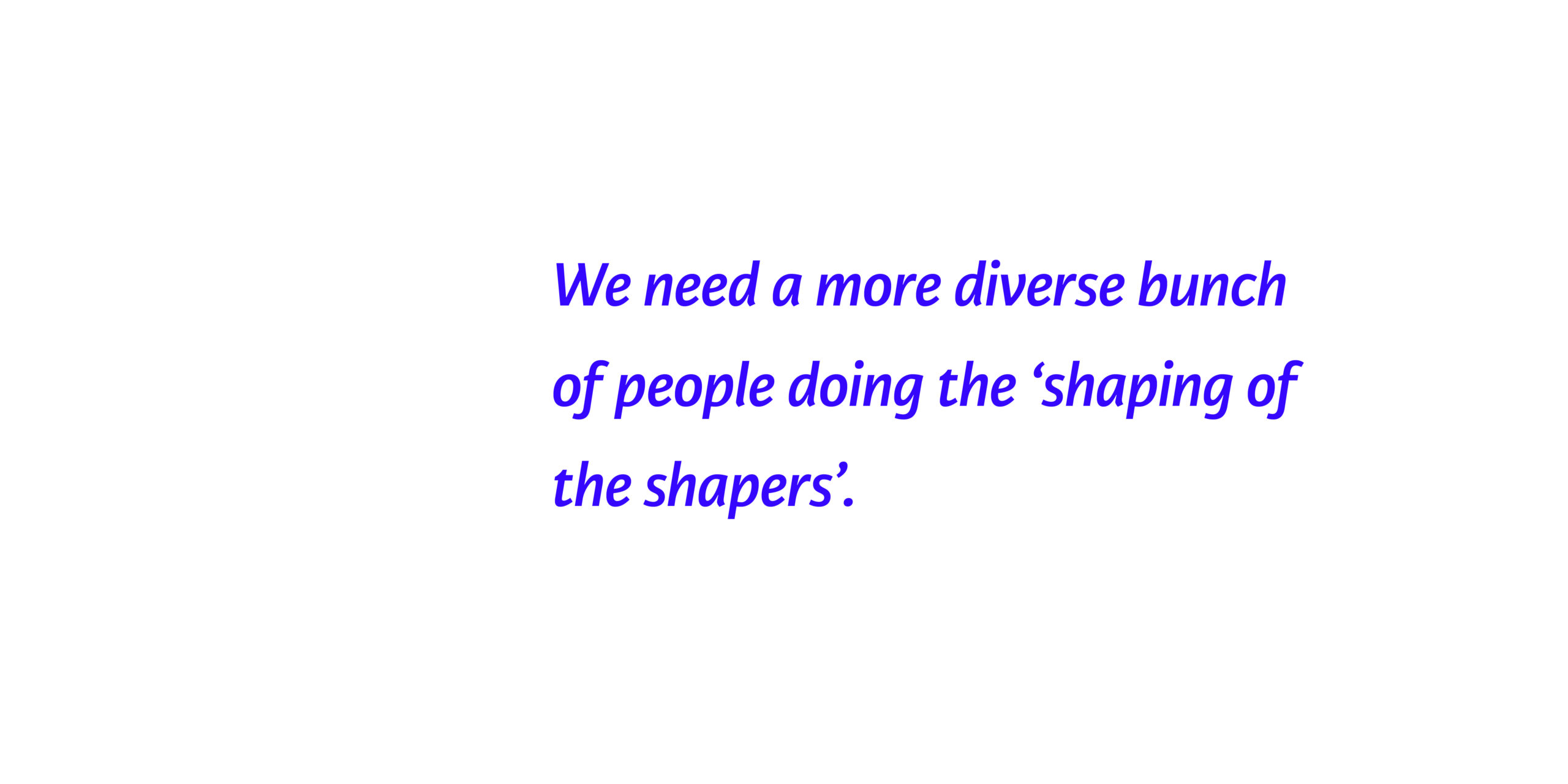
Ultimately, teachers could have the most lasting effect on your practice.
So I’m grateful that I didn’t attempt to teach myself, instead I learnt from a bunch of talented folk, alongside talented more. I enjoy seeing my former classmates working in all types of innovative fields today and who knows where to next? Your guess is as good as mine. I’m still not on Tik Tok, but that’s ok – the futurists tell me there is something better around the corner.

* The Anthropocene (the ‘recent age of man’) is a proposed geological time interval that marks the period of time since humans have impacted the Earth’s systems at a scale significant enough to leave markers visible in the rock record. The geological organisations that are considering its formal ratification as a term suggest that the mid-twentieth century – around the time of the Atomic Age and post-WWII socioeconomic changes – marks the transition to this epoch. (Jo Bailey)
—-
Thank you to all of our contributors:





